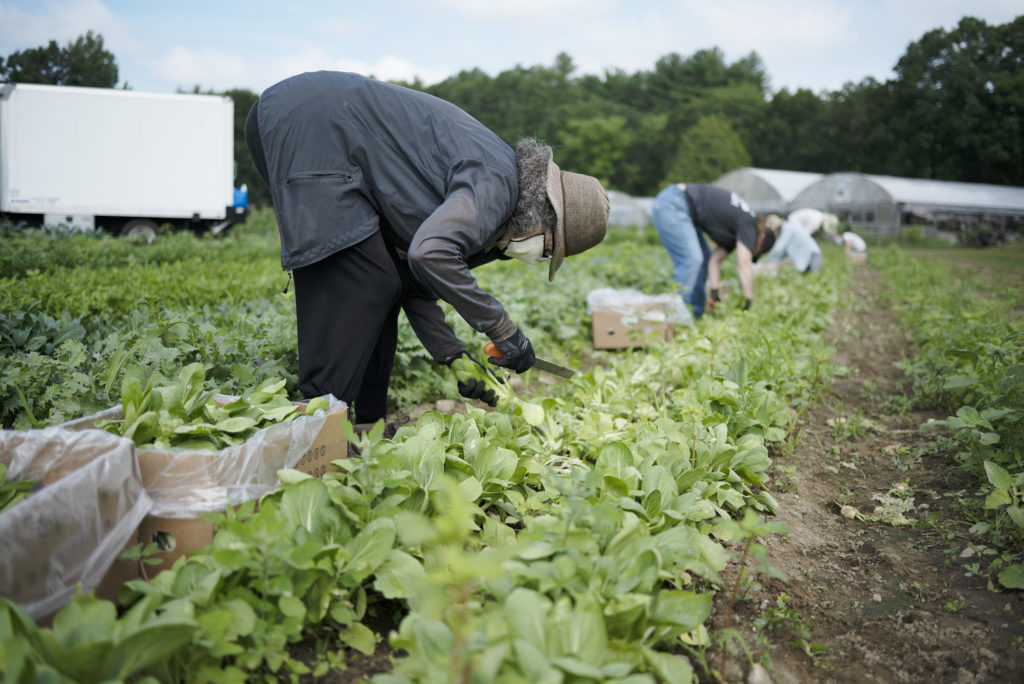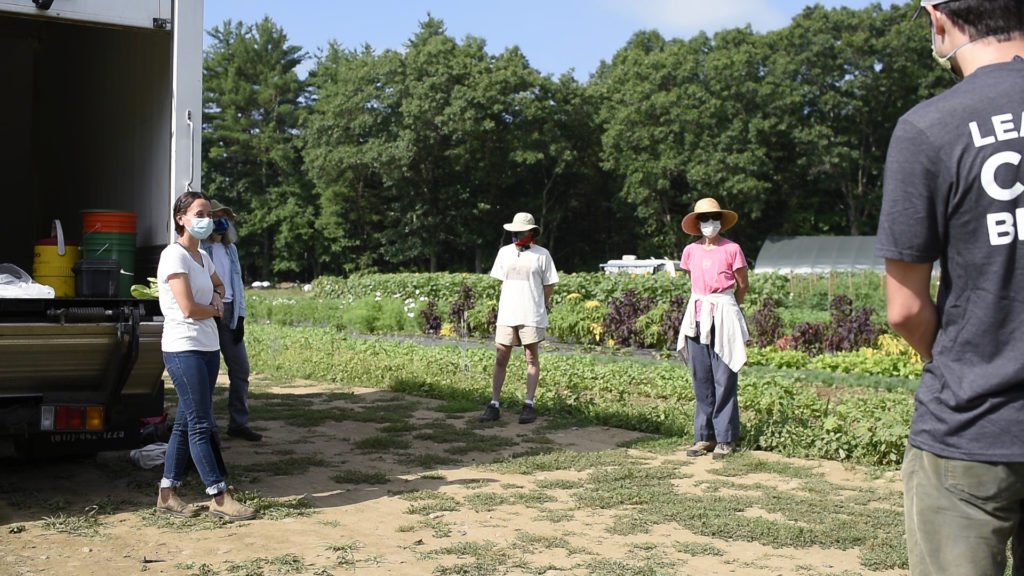How Can We Help?

Gleaning Row Crops
SCHEDULING A TRIP
When talking to a farmer about scheduling, be sure to ask the following questions:
- What & how much is available to glean?
- Is there a limit to how much the Gleaners can take?
- Is it a maintenance harvest or final harvest before being plowed under/pulled out of the ground? This determines harvesting technique. With maintenance harvest, it is best to use less volunteers as the gleaning coordinators will need to supervise the volunteers more than during a clear-cut harvest.
- How long will the crop be ripe, or when does the farmer want to plow it under by?This is to get an idea of the time frame for gleaning.
- When (date/time of day) can the Gleaners come? Explain how long the gleans typically run (typically 2-3 hours)
- Where are the crop(s) and where should the Trip Leader meet the farmer? Or, if they aren’t not going to be there, ask about any special instructions (electric fence switches, forbidden areas, etc.) and how they will mark off the crop to be gleaned. Many farmers will use landscaping flags for this purpose. Ask for plenty of directions!
- Is there a limit for the number of volunteers? How many does the farmer recommend?
- Where can volunteers park?
ARRIVING AT THE FARM
BAG staff should arrive at least 15 minutes early to a gleaning trip in order to check in with the farmer in person. It’s best to call the farmer upon arrival, and allow them to walk with you to the crops they’re donating to get a sense of the exact boundaries of the harvest, confirm the harvesting technique (i.e. if kale can be taken in full crowns or only leaf-by-leaf, etc.), and watch out for potential hazards. It’s best to confirm preferred parking areas with the farmer as well.
Trips will typically have at least two staff—a trip leader and supporting staff member. While the trip leader coordinates with the farmer, and as volunteers begin to arrive, supporting staff will check in with the group.
INTRODUCTORY MEASURES WITH VOLUNTEERS
The online Volunteer Sign-Up process at BAG has volunteers review a number of safety policies and guidelines, and requires them to sign off on a liability waiver. The Terms & Conditions, Health & Hygiene Policy , and COVID-19 Protocols must all be affirmed as part of the registration & sign-up process, and staff leaders should familiarize themselves with each document prior to heading on a glean. Leaders will bring a printed roster from Gleanweb to the trip so that volunteers may be quickly checked-off as they arrive. As an additional step in 2020 Safety Protocols for COVID, volunteers’ temperatures are recorded with a non-contact thermometer as they arrive—and anyone with a fever (temperature above 100.4°) will not be allowed to participate.
It’s useful to include an optional photo release form that can be checked-off during sign-up. This gets marked on the trip roster so that staff know who to avoid capturing in photographs during the trip.
Occasionally, volunteers who did not complete an online sign-up form will show up at a glean—to prepare for this, BAG has a stock of printed sign-up sheets and laminated versions of safety protocols and waivers for trip leaders to hold onto. Walk-on volunteers must sign-off on each document before participating in the project.
If the field to be gleaning is far from the parking area, the introductory talk should occur near parking, so that anyone arriving a few minutes late can easily find the group. Folks should circle up to share names, and staff can verbally review some of the most critical safety measures. BAG’s “Trip Introduction” document standardizes this language for trip leaders.
At this point, it’s important to give an introduction to the farm and recognition to the farmer for the donation, as well as some background into why the crop is being donated (be it a labor shortage, market saturation, a maintenance harvest, etc.). This can be an educational opportunity, and also creates a sense of urgency—a motivation to get as much as possible now, because the farmer won’t be able to harvest this later!
If the group needs to travel through the field to arrive at the crop site, they will do this after introductions. Once on-location, staff will set up an easily accessible wash station (water jug, soap, and paper towels), and designate where volunteers can leave their personal items. All participants must wash hands and wear gloves during the activity. Once folks are sanitized and prepped, it’s time to start the glean!

DURING THE GLEAN
The trip leader will guide volunteers to the crop and run a demo:
- Demonstrate how to prep harvest boxes (banana boxes) by inserting a plastic bag liner.
- Detail the quality to look out for—size, shape, and ripeness. It is useful to show visual examples of unacceptable quality crop as well.
- Demonstrate proper harvest technique. This includes considering efficiency, ergonomics (some crops may place particular strain on the back, for example, if they position themselves in a strenuous way), and safety (particularly when handling knives).
- Show how to pack the box—how crops may be stacked, and what fill level to aim for.
- Be clear about how to move about the field! There may be nearby plantings and delicate neighboring crops to be careful of.
As this demonstration is occurring, supporting staff should prep harvest boxes for the team, so that there are enough at the ready for volunteers to jump right in.
All volunteers should move only in one direction down a given row and should space apart several yards on any given side so that they aren’t constantly leapfrogging over each other. Typically, participants will be spaced out and harvesting multiple rows of crop at once, or, with larger groups, two different crops at once.
Staff should perform quality checks on volunteers’ harvests regularly—particularly in the first few minutes. One staff member should also dedicate themselves to shuttling harvest boxes—volunteers are not expected to carry out boxes themselves, so staff must be prepared to pick up boxes from the field as they fill, and continuously set out more prepped boxes throughout the field to ensure participants can continue down the row efficiently without needed to walk back and forth to restock on boxes.
Throughout the process, it’s important to have conversations with volunteers! The camaraderie during trips is one of the things that BAG volunteers enjoy most about gleaning. Ask about their background, and whether they’ve come out with us before. Be sure to also check-in about how they’re feeling—particularly during very physical tasks. And remind them to drink water!
Take photos throughout the trip as well. Action shots of individual volunteers & of groups working as a team, close-ups of (good-looking) crops, and group photos at the end are all great. Try to get farmer pictures every once in a while too, and pictures of the farm/farmstand sign!
END OF TRIP
After the trip is over, take a moment to thank volunteers, and share reflections on the trip if volunteers have time and seem energized.
The printable roster from Gleanweb will also include a data collection sheet than can be filled out following a harvest. This includes staff initials, staff hours, crops harvested, and number of cases collected per crop. An operations team member will upload this data into the BAG inventory management system after a trip, and in the following days they’ll sent out a thank-you to volunteers using a prepared template on Gleanweb (See “Volunteer Relations at Boston Area Gleaners”.


